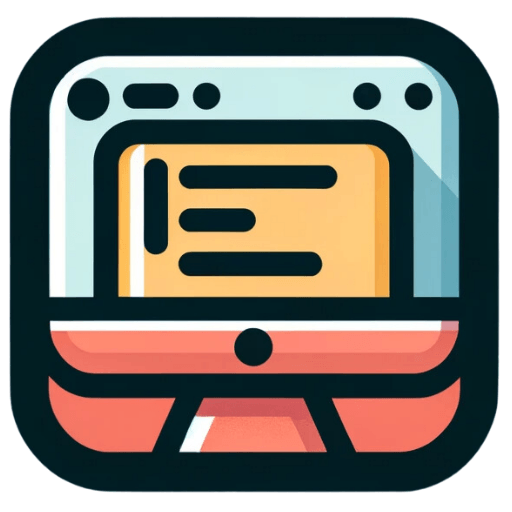How Do You Integrate Accessibility into Your Workflow?
Web professionals from founders to tech entrepreneurs reveal how they embed accessibility into their digital fabric, starting with the principle of incorporating accessibility right from the design phase. Alongside expert insights, we also explore additional answers that enrich our understanding of inclusive web practices. From the foundational adoption of WCAG guidelines to the development of inclusive user personas, discover the multifaceted approaches that ensure web accessibility is not an afterthought.
- Incorporate Accessibility from Design Start
- Create Accessible UI Libraries
- Adopt WCAG as Project Foundation
- Use Accessibility-Ready Design Templates
- Conduct Regular Accessibility Training
- Embed Screen-Reader Testing in QA
- Develop Inclusive User Personas
Incorporate Accessibility from Design Start
Ensuring accessibility in web development is crucial for creating inclusive experiences. To integrate accessibility into our workflow, we start by incorporating best practices from the beginning of the design process. This includes using accessible color contrasts, ensuring keyboard navigability, and adding alt text for images. For instance, in a recent project, we redesigned a client's website with a focus on accessibility. We conducted regular audits using automated tools and manual checks to ensure the site met WCAG standards. This proactive approach not only improved user experience for those with disabilities but also enhanced overall site usability.

Create Accessible UI Libraries
As a web professional and entrepreneur, ensuring accessibility is integrated into my workflow is a top priority. However, accessibility is a complex and evolving field, especially when building robust UIs. That's why I've taken the approach to tackle this challenge by creating my own UI library, VerveUI (https://verveui.pro).
The challenge is that accessibility is hard: the rules and best practices are intricate, and staying up to date requires a specialized and continuous focus. To address this, I made a strategic decision to integrate React Aria into VerveUI. React Aria is a library created by Adobe that focuses on accessibility for React components. It's built by experts who have dedicated themselves to understanding the nuances of web accessibility. By leveraging React Aria, VerveUI can offer top-grade accessibility features out of the box, without requiring users to be accessibility experts themselves.
In practice, React Aria handles the accessibility layer, but that necessarily requires an API that is too low-level and complex for web developers to be efficient. The job of a library like VerveUI is to offset that complexity, allowing developers to continue building high-quality applications without sacrificing either speed or accessibility.
When you use this technique of layering a higher-level library on top of an accessibility library, you gain components that automatically have keyboard navigation, screen reader compatibility, and ARIA roles without developers needing to configure anything manually. This allows developers to focus on building their applications while trusting that accessibility is being handled by experts.
By integrating React Aria into your own library, you'll be able to simplify the complex challenge of accessibility without having to sacrifice speed. This approach ensures that accessibility is not just an afterthought but an integral part of the development process, allowing web professionals to build fast while delivering inclusive, high-quality applications.

Adopt WCAG as Project Foundation
Integrating accessibility into a workflow could begin with the adoption of the Web Content Accessibility Guidelines (WCAG) as the foundational criteria for all projects from the very start. By establishing this standard early on, all team members can design and develop with a clear set of accessibility objectives in mind. It facilitates a shared understanding of the requirements necessary to make content accessible to a wide range of users, including those with disabilities.
It also ensures that accessibility considerations are not an afterthought but integrated into every stage of the project lifecycle. Encourage your team to familiarize themselves with WCAG to create more inclusive products and services.
Use Accessibility-Ready Design Templates
Utilizing design templates that have accessibility features already incorporated can streamline the process of creating inclusive digital experiences. These templates serve as a roadmap, diminishing the likelihood of overlooking important accessibility aspects during the design phase. They are a resource that guides designers in understanding the correct use of color contrast, font sizes, and navigation elements that are accessible to all users.
By starting with an accessibility-focused template, design teams can ensure they are considering the diverse needs of users from the outset. Make use of accessibility-friendly design templates to accelerate the development of inclusive products.
Conduct Regular Accessibility Training
Regular accessibility training keeps teams updated on the latest best practices and legislative requirements, enhancing their ability to create accessible content. These training sessions can impart knowledge on how disabilities affect the use of digital products and the importance of complying with accessibility standards. With ongoing education, team members become more aware and proactive in recognizing potential barriers during the design and development processes.
As awareness grows, so does the likelihood of producing services that are truly accessible to everyone. Invest time in organizing regular accessibility training sessions to empower your workforce with the knowledge they need to succeed in inclusive design.
Embed Screen-Reader Testing in QA
Incorporating screen-reader testing into the Quality Assurance (QA) processes helps identify accessibility issues before products reach end-users. By embedding this step within the QA routine, it becomes a regular part of the testing cycle rather than a one-off check. This practice not only catches errors early on but also raises the team’s understanding of how screen readers interpret content.
Moreover, it aids in cultivating empathy for users who rely on assistive technologies to navigate digital spaces. Be sure to include screen-reader assessments in your QA checks to ensure your work is accessible by all.
Develop Inclusive User Personas
When developing user personas for projects, incorporating a diverse range of abilities and limitations can greatly expand the inclusivity of a product. Inclusive personas help design and development teams to better understand and anticipate the challenges faced by users with disabilities. This approach prompts the consideration of a variety of user interactions and ensures that the product will cater to a broader audience from the beginning.
In having these personas, teams can be more mindful of accessibility throughout the entire design process. Start creating more representative user personas today to ensure your products are designed with every user in mind.

